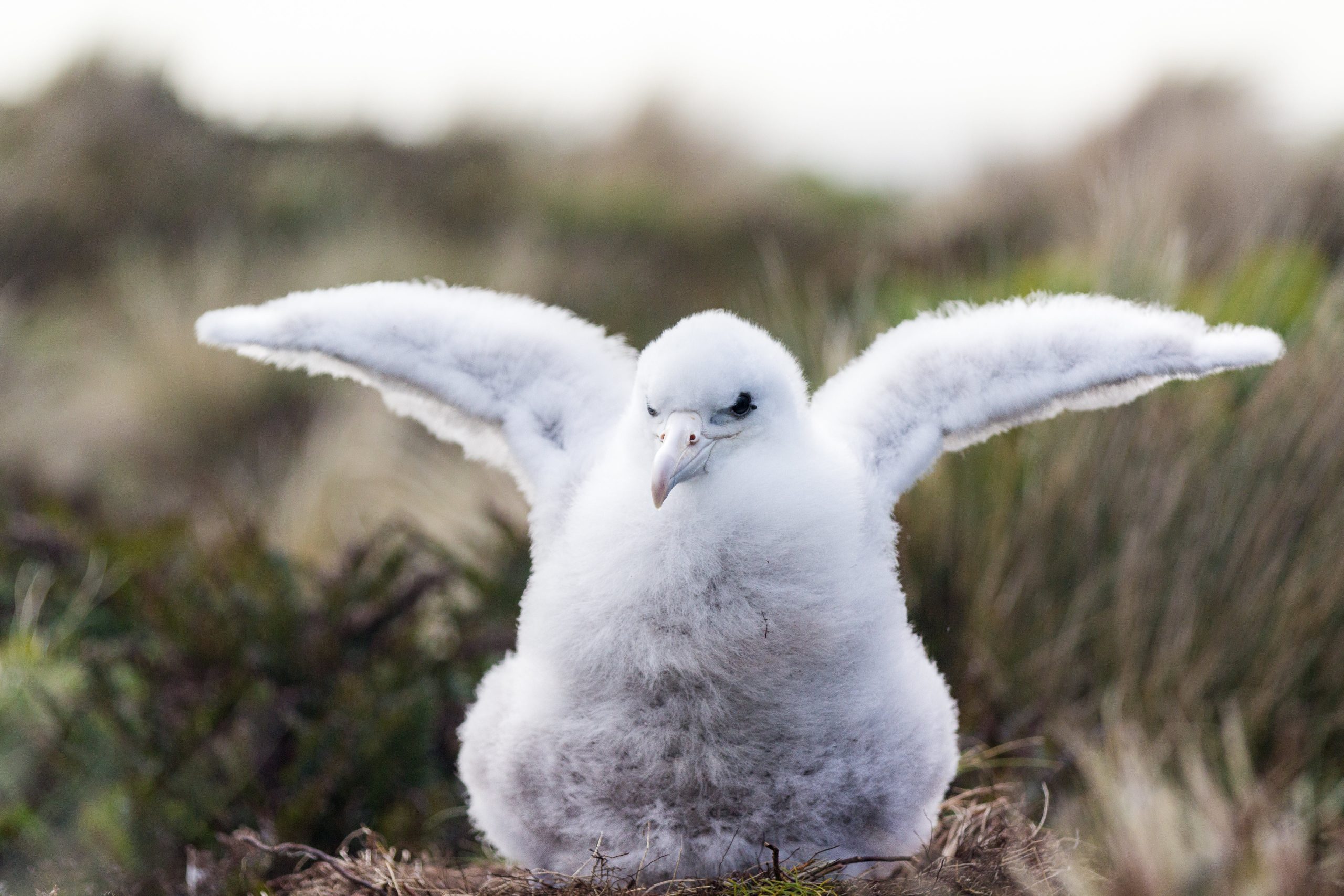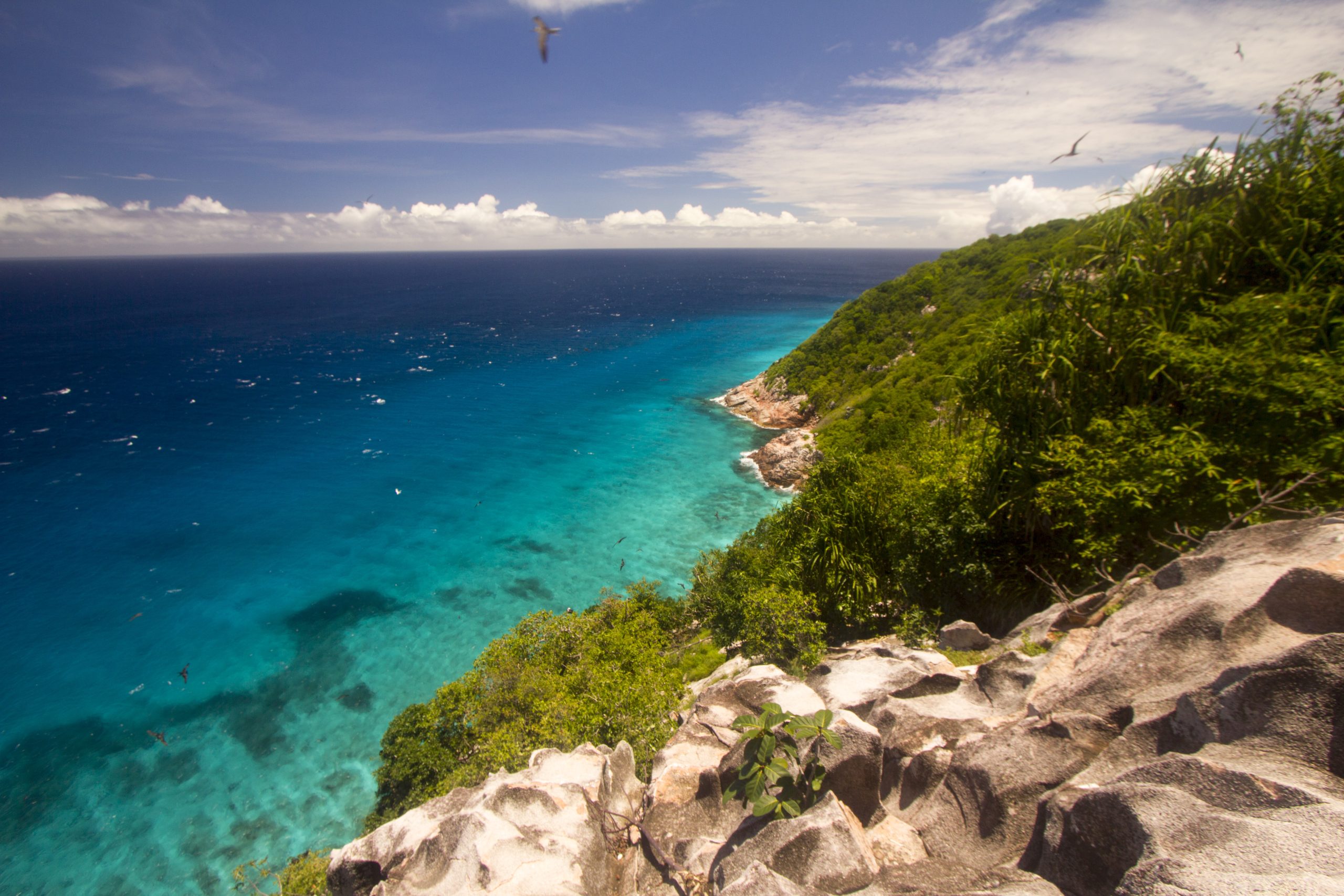By Carolina Torres Trueba, International Legal and Administrative Manager, Island Conservation
Islands are a focal point in the global biodiversity crisis. Despite making up only 5 percent of the planet, they have seen 61 percent of all recorded extinctions since the 1500s and are home to 40 percent of all vertebrates that are currently considered to be critically endangered. The human introduction of invasive animals to islands — particularly mammals like rats, cats, and goats —has had devastating consequences, including the extinction of local species and extensive habitat damage.

Juvenile Antipodean Albatross in the Antipodes Islands. Photograph: Island Conservation
A new paper released by Island Conservation and colleagues across the globe, titled “The Global Contribution of Invasive Vertebrate Eradication as a Key Island Restoration Tool“, shows that eliminating invasive species from islands is one of the most effective tools to halt and reverse biodiversity loss in these areas. The paper is the first compilation of all documented pest eradications on islands around the world. The Database of Island Invasive Species Eradications (DIISE), a publicly available dataset, was used to compile almost one hundred years’ worth of attempts to eradicate invasive vertebrates from nearly one thousand islands. The investigation discovered an 88 percent success rate, revealing the impact and potential of invasive species eradication as a tool for biodiversity conservation.
For decades, Island Conservation has focused on eliminating invasive species from islands to successfully restore these threatened ecosystems. In the Seychelles, for example, over a decade of conservation efforts aimed at controlling invasive alien predators has helped restore native habitats. About 470 hectares of woodland have been rehabilitated through the replanting and recovery of native vegetation, and at least 36 successful island translocations of native birds and reptiles have been conducted.

The bird cliffs on Aride Island, in the Seychelles. Photograph: Island Conservation
While eliminating invasive species from islands has greatly benefited biodiversity and the environment, invasive species have only been completely removed on less than 20 percent of islands with globally threatened species, indicating that more action is urgently required. There is a need for increased efforts to meet global biodiversity targets and reverse current extinction trajectories.
Investing in innovation and resources has allowed countries that have been recovering islands for decades to succeed. Governments are now looking towards larger, more challenging projects, which would include restoration work such as species translocation. This pattern highlights the need for investing in strategies and tactics that increase efficiency and get around the social, ethical, and economic limitations of the current tool set. Facing the challenges ahead, the future of conservation can benefit from a wide range of solutions being developed in the field of science and innovation.
More information about the paper is available on Island Conservation’s website. The full study can be found here.
Recent posts
